Camping has come a long way since the early days of roughing it in the wilderness with little more than a bedroll and a fire.
From pioneers who first explored the American West to modern-day van lifers and Instagram influencers, camping has always been a popular way to disconnect from the daily grind, reconnect with nature, and enjoy life’s simple pleasures.
For some, camping means pitching a tent in a quiet forest or by a serene lake, while for others it means luxury glamping in a fully-equipped cabin or yurt. Some campers enjoy the challenge of backpacking deep into the wilderness, while others prefer the comfort of an RV or van.
Ultimately, it doesn’t matter how you choose to explore the wild; there’s something for everyone – the world of camping has never been more diverse.
In this article, we’ll explore some of the most exciting, different types of camping available today, whether you’re an adrenaline junkie or a family looking for a fun weekend getaway.
- Tent camping
- Glamping
- Car camping
- Backpacking / Hiking camping
- Ultralight camping
- Dispersed camping
- Bicycle camping
- Survivalist camping
- Winter camping
- RV camping / Van camping
- Hammock camping
- Bivvying
- Overlanding
- Kayak camping / Canoe camping
- Rooftop camping
- Motorcycle camping
- Backyard camping
- Beach camping
- Dry camping
- More useful tips for your next camping adventure
Tent camping
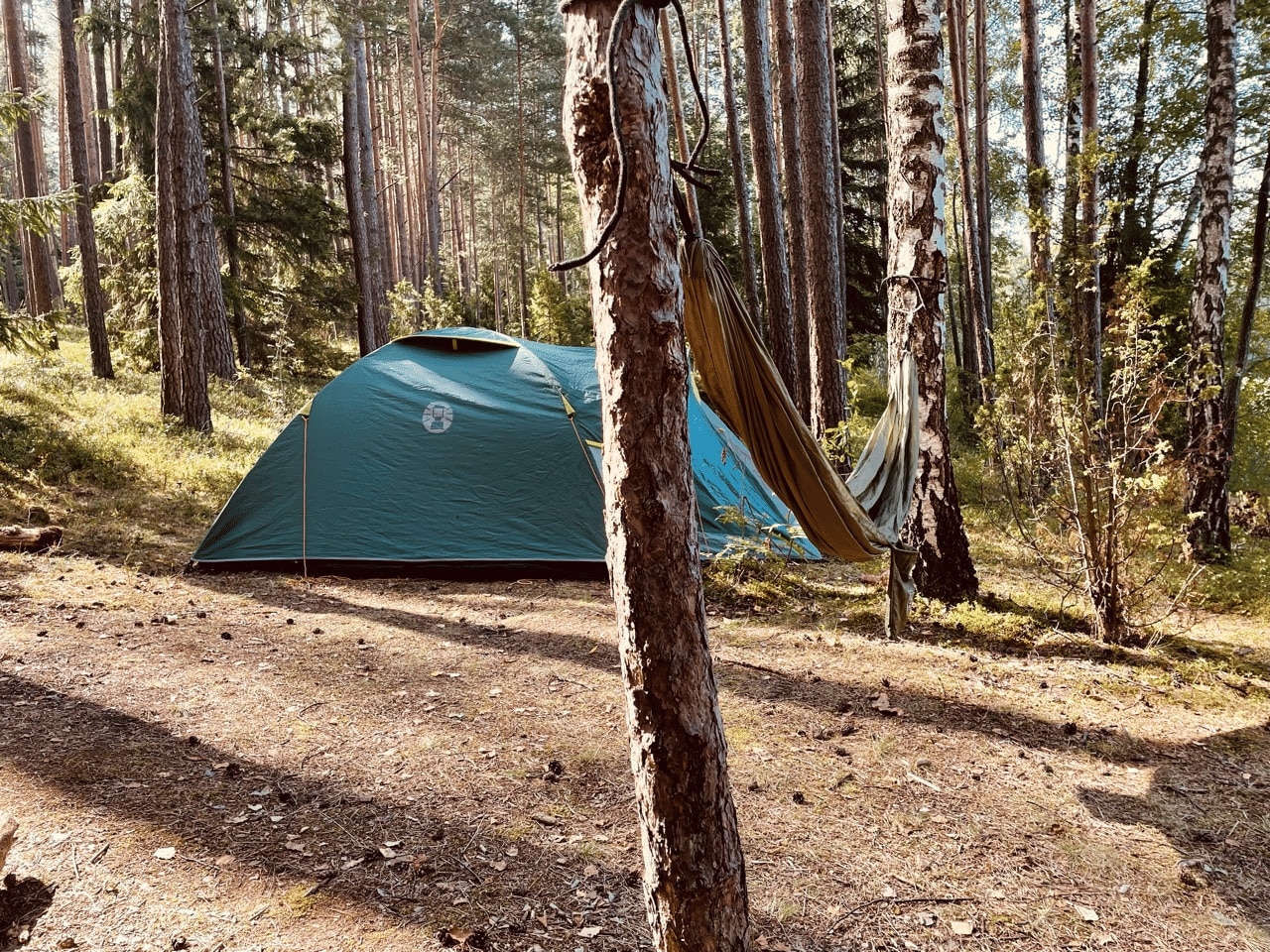
Traditional tent camping is the classic camping style that offers a unique connection to nature while pitching a tent in a campground or wild area.
All you really need is a tent, some sleeping bags, and a few basic supplies, and you’re good to go.
With the opportunity to unplug and unwind, tent camping offers benefits like affordability and flexibility. You can choose from a wide range of campgrounds and national parks, from rustic and secluded to developed and amenity-filled. Plus, there are plenty of types of tents to fit your needs.
Of course, it’s essential to research the specific rules and regulations of the area where you plan to tent camp. And be sure to mind camping safety and keep an eye out for wildlife – you never know what critters might be lurking in the woods.
Glamping
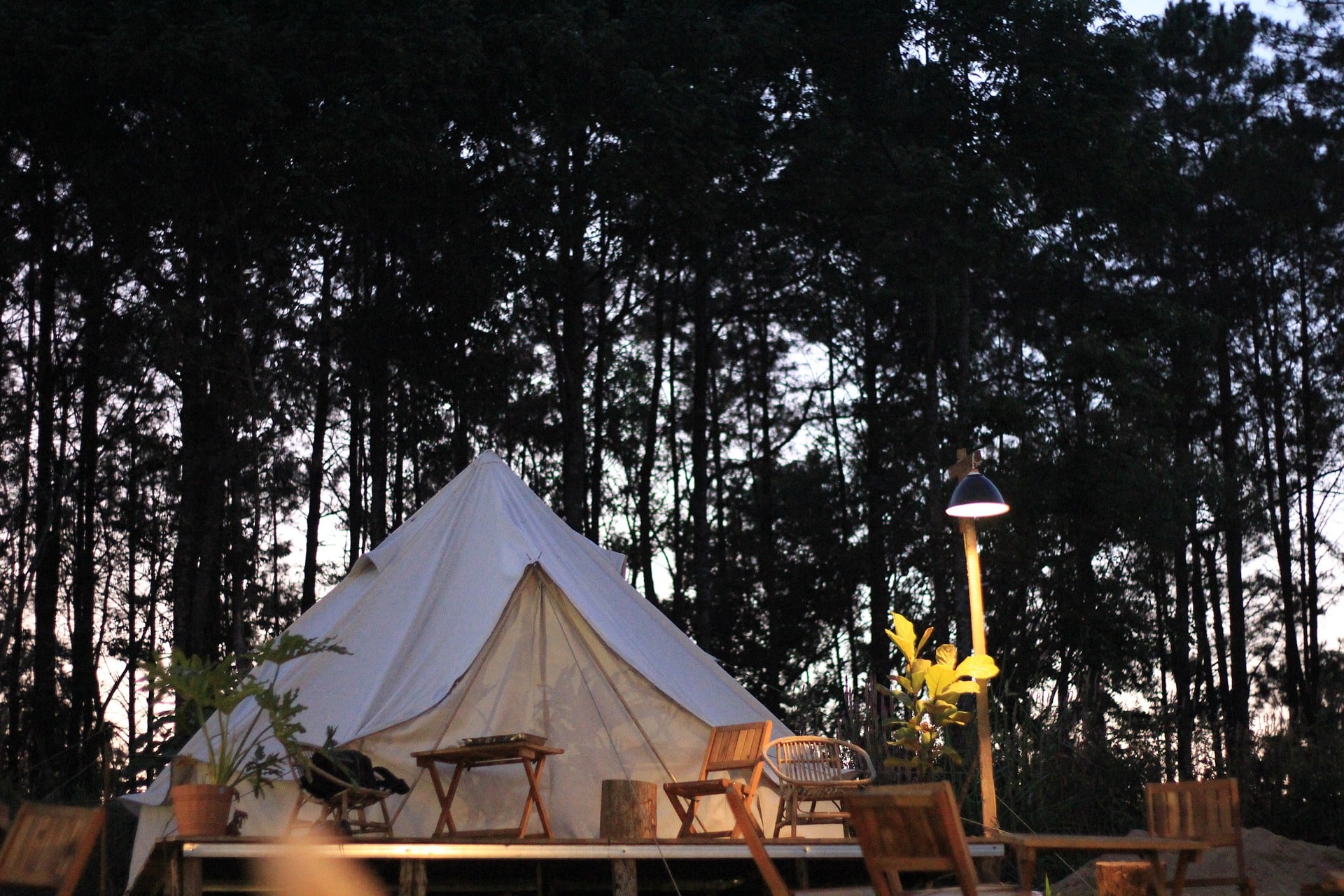
For those who love the great outdoors but prefer not to rough it, there’s glamping – the glamorous version of camping. Glamping, or glamorous camping, combines the beauty of nature with the luxury of a high-end hotel, and it’s the perfect way to experience the great outdoors without sacrificing comfort or style.
Glamping can take many forms, from safari-style tents to treehouses to fully equipped cabins or cabin tents. The accommodations are usually decked out with all the amenities you’d expect from a luxury hotel, such as comfortable beds, high-quality linens, and even private hot tubs.
One of the most significant benefits of glamping is that it offers a unique and memorable experience that you won’t find at a typical hotel or resort. You can enjoy stunning views, breathtaking sunsets, and the peace and quiet of nature, all while enjoying the comforts of home.
Still, it’s worth considering some differences between traditional camping vs glamping. For example, glamping will most likely be more expensive than conventional camping.
But the experience is well worth the cost for those seeking a one-of-a-kind adventure.
Car camping
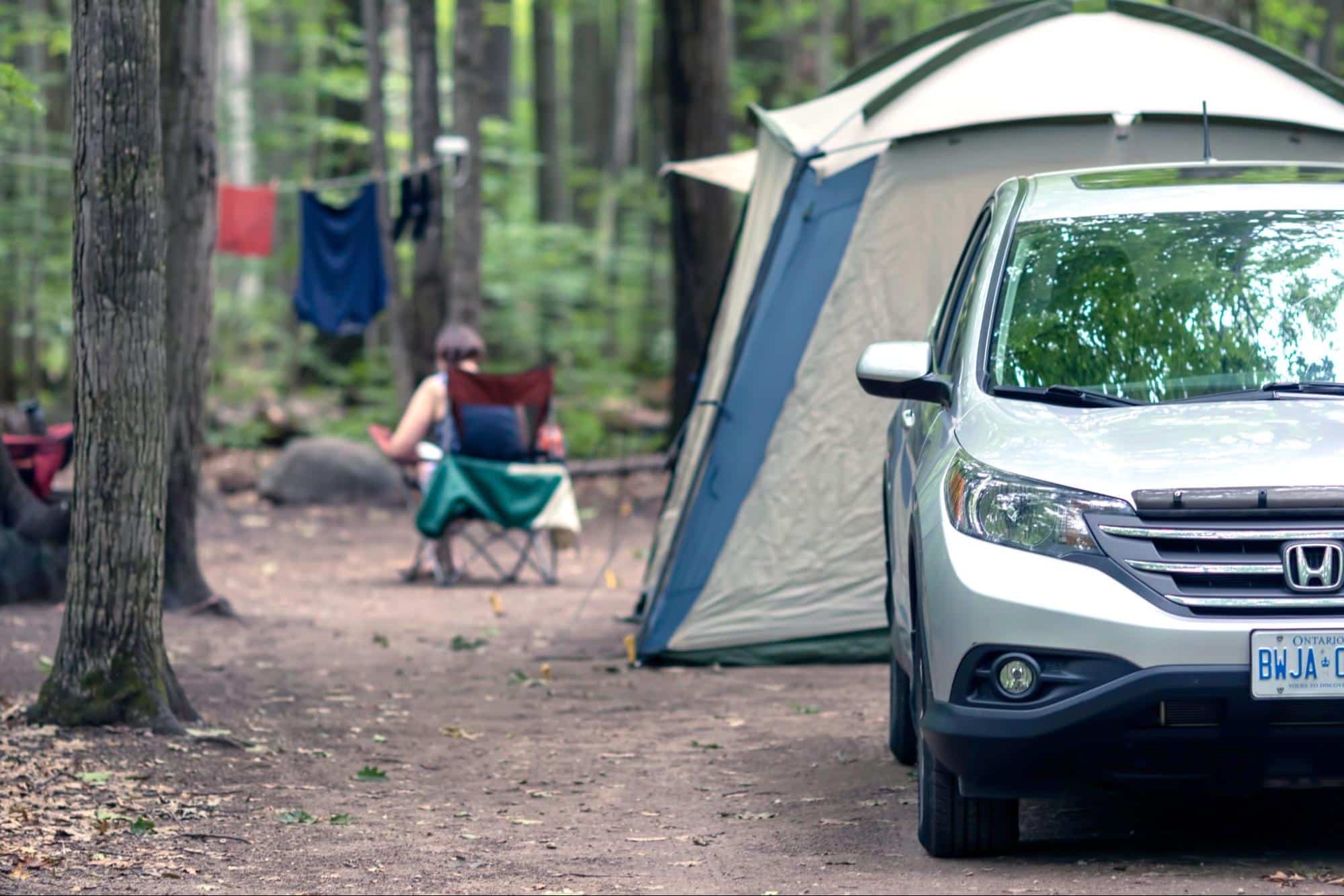
Car camping is the perfect solution if you love camping but don’t want to hike miles into the wilderness with all your gear on your back. It’s a popular way to camp in comfort, and it’s especially great for families or those who want to bring along more gear.
Car camping involves driving your vehicle to a designated campsite or wild spot and setting up camp nearby. The benefit of car camping is that you can bring along more gear and supplies since you don’t have to worry about carrying everything on your back.
You can pack everything from camping lanterns and a foldable camping table to a portable grill or even a cooler full of your favorite drinks and snacks.
Car camping is also more accessible than other forms of camping since you don’t have to worry about hiking long distances or carrying heavy gear. This makes it a great option for those new to camping or with mobility issues.
Backpacking / Hiking camping
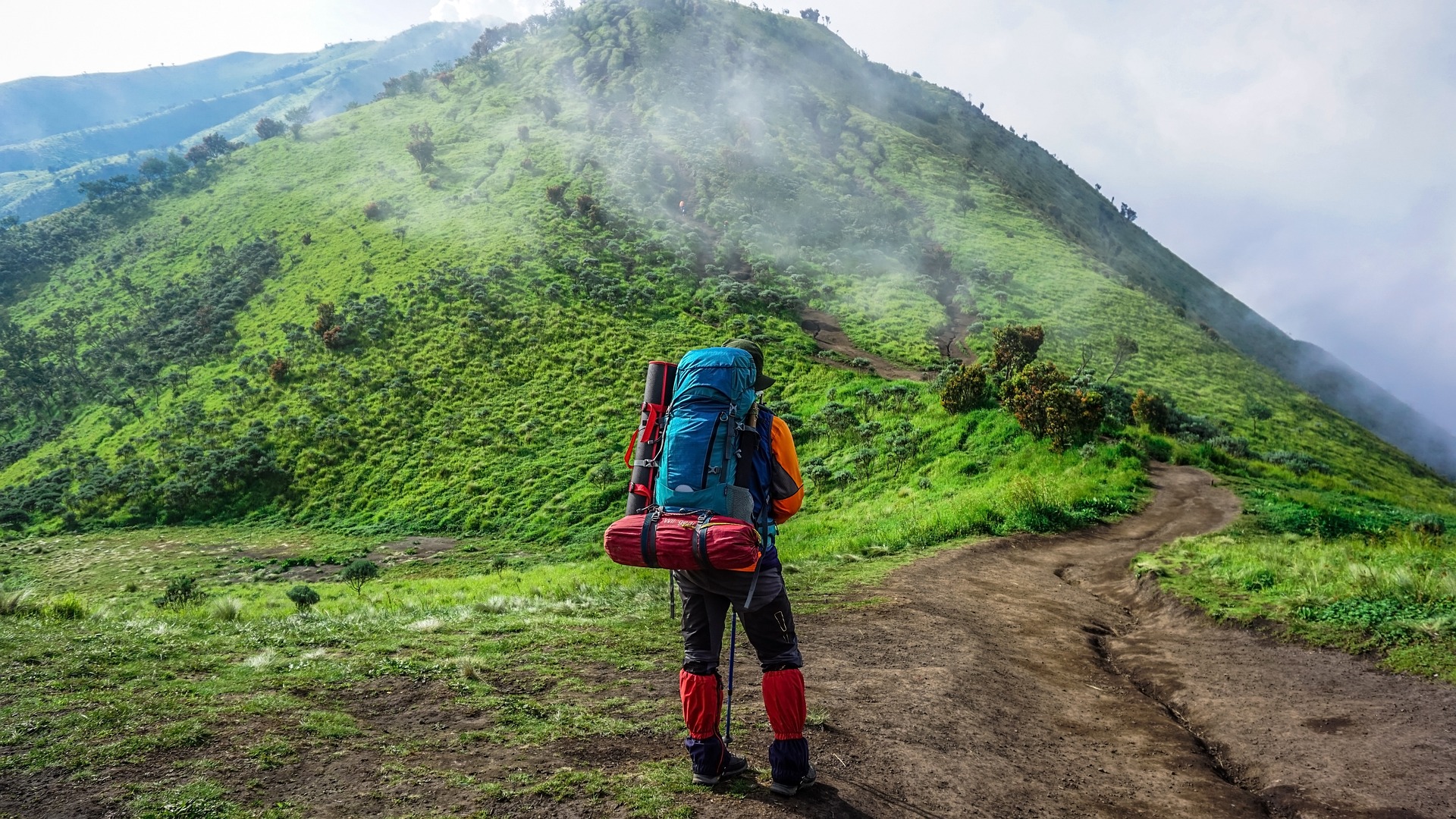
If you’re looking for a more adventurous and immersive camping experience, backpacking or hiking is your shot.
Backpacking involves carrying all your stuff – from campfire cooking equipment to sleeping gear – on your back and hiking into the wilderness, while hiking camping typically involves shorter hikes to established backcountry campsites.
Backpacking and hiking camping allow you to truly immerse yourself in nature as you explore remote areas and experience the beauty of the great outdoors up close. It’s also a great way to get some exercise and challenge yourself physically as you navigate rough terrain and steep inclines.
One of the benefits of backpacking and hiking camping is that you can often access more remote and secluded areas than you could with car camping or other forms of camping. You can explore rugged mountains, deep canyons, and pristine wilderness areas inaccessible by car or RV.
For those seeking an even more adventurous experience, adventure camping combines the challenge of backpacking or hiking camping with more extreme outdoor activities like rock climbing, mountaineering, or white water rafting.
Adventure camping is an excellent option for physically fit people seeking a high-energy, adrenaline-pumping camping experience.
See our blog post on small 2-person tents for best lightweight tent picks.
Ultralight camping
For those who love backpacking but want to travel as light and fast as possible, ultralight camping might be an excellent option.
Ultralight camping involves carrying only the bare camping essentials and leaving behind anything that isn’t necessary. This allows you to move quickly and efficiently and explore more rugged and remote areas.
Ultralight camping requires careful planning and preparation, as you must ensure you have everything you need while keeping your pack as light as possible. This means choosing gear that is lightweight and multi-functional and leaving behind items that are not essential.
For example, instead of bringing along a whole kitchen set, you’d go with an ultralight camping mess kit.
One of the ultralight camping benefits is that it allows you to access more remote and rugged areas than you could with traditional backpacking gear. You can explore high alpine terrain, deep canyons, and other inaccessible areas for those carrying heavier loads.
Ultralight camping is also a great way to challenge yourself physically and mentally as you push yourself to travel farther and faster. It’s an excellent option for those who are seeking a more minimalist, back-to-basics camping experience.
Dispersed camping
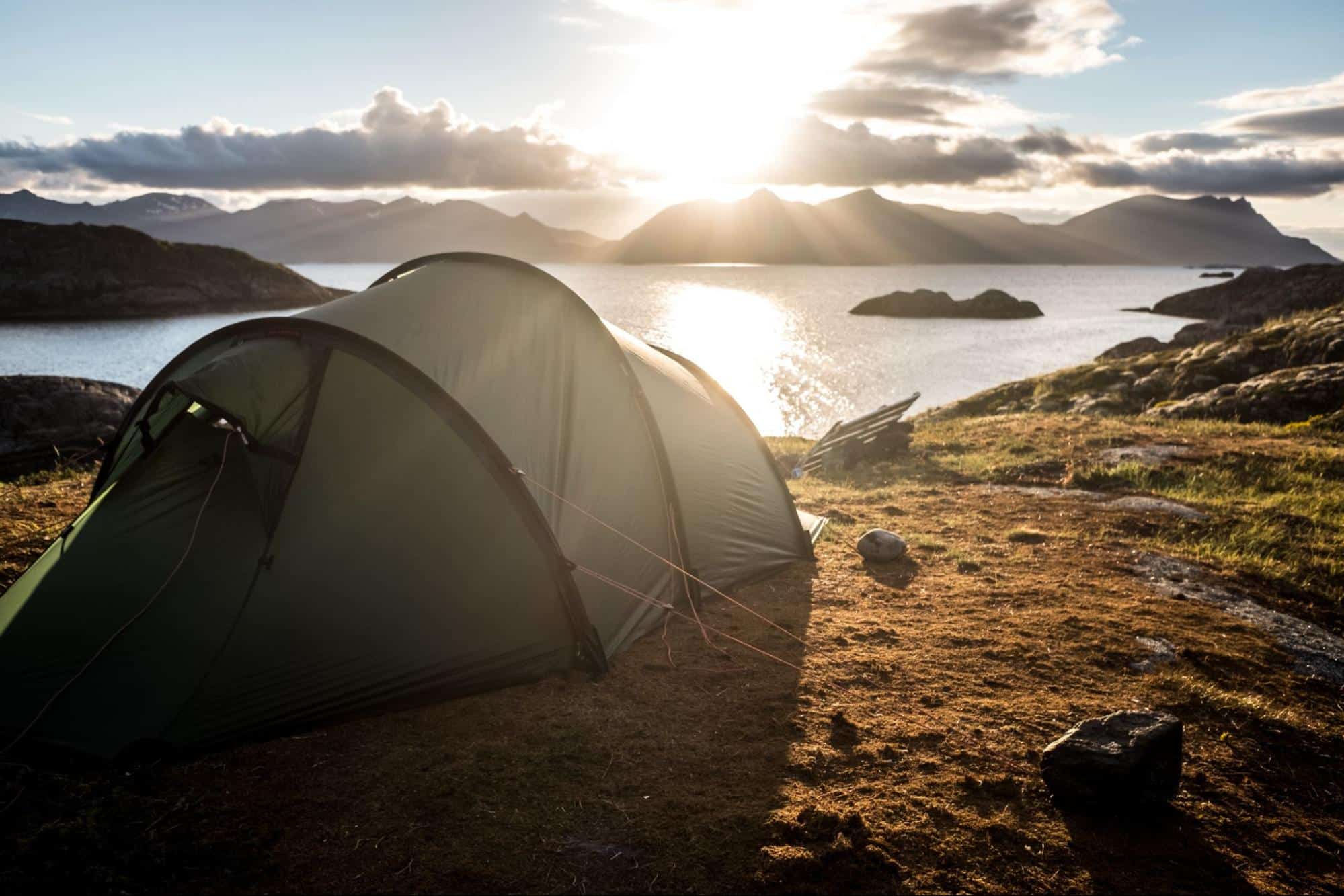
Are you looking to get away from the crowds and experience the great outdoors more authentically? Dispersed camping is the ultimate way to immerse yourself in nature.
Dispersed camping, also known as primitive camping or backcountry camping, involves camping outside of designated campgrounds or established campsites. It’s often done in remote or undeveloped areas, such as national forests or BLM lands, and requires more self-sufficiency and planning than traditional camping.
But with great challenges comes great reward! Dispersed camping allows you to experience nature in a way few others can. You can camp in remote areas, far from the noise and chaos of established campsites, and enjoy the solitude and tranquility of the wilderness.
And while dispersed camping requires more preparation than traditional camping, it’s a great way to test your wilderness skills and challenge yourself both physically and mentally.
You’ll need to bring all your gear and supplies and ensure you follow all Leave No Trace principles to minimize your environmental impact.
Bicycle camping
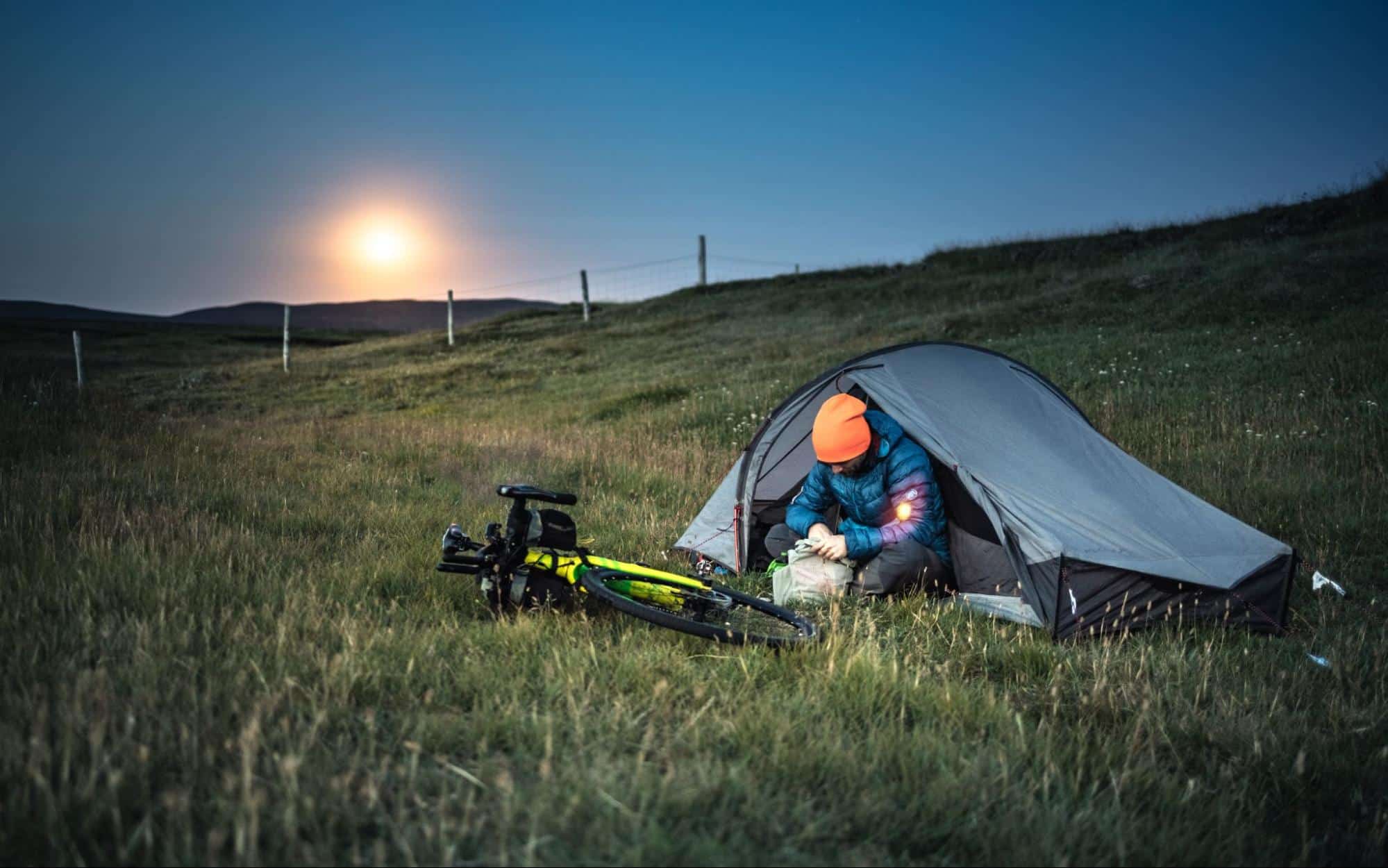
Bicycle camping involves packing all your camping gear onto your two wheels, hitting the road, exploring new areas, and camping in various locations.
Bicycle camping allows you to cover more ground than you could with traditional backpacking gear, while still being able to carry all your gear with you.
You can explore scenic back roads, rolling hills, and beautiful countryside while enjoying the freedom and exhilaration of cycling.
It’s a camping style that makes you more self-sufficient, as you can bring all your gear and supplies on your bike. You don’t have to worry about finding a place to stay or buying meals along the way, and you can explore remote areas that might not be accessible by car or RV.
Bicycle camping can be done in various settings, from established campsites to remote backcountry locations. Some cyclists even combine bicycle camping with bike-packing, which involves carrying even less gear and exploring more rugged and remote areas.
Survivalist camping
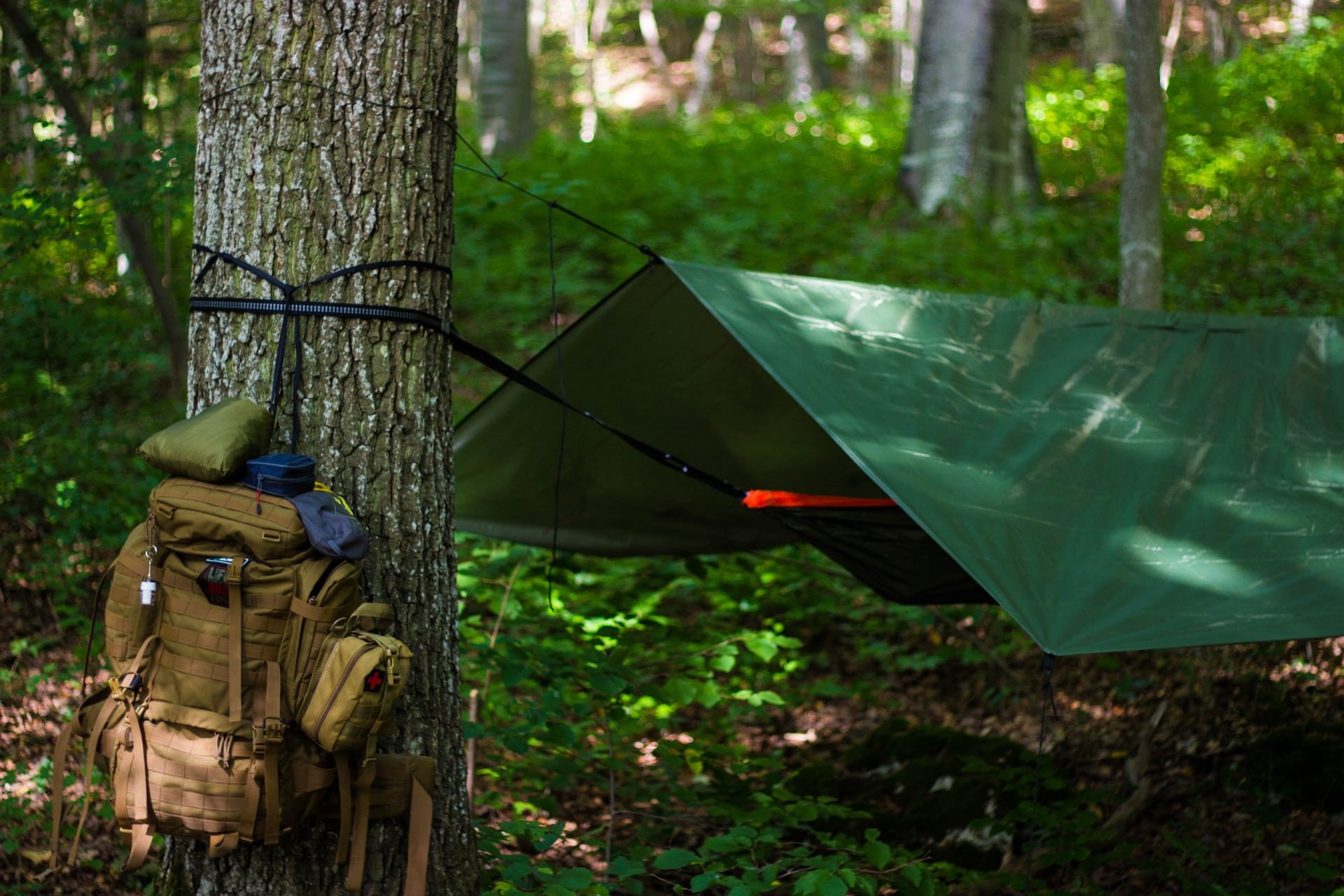
If you’re the adventurous type who loves to push your limits and test your skills, survivalist camping might be the perfect option. Survivalist camping, also known as bushcraft camping, involves using your wilderness skills (relying on 5 C of Survival) to live off the land and survive in the great outdoors.
Survivalist camping requires a high level of knowledge, preparation, and skill, as you need to be able to find food, water, and shelter in the wilderness. This often involves learning how to start a campfire, purify water, build shelter, and forage for food.
This camping style develops a deeper appreciation for the environment around you. You’ll learn to live in harmony with the natural world and rely on your skills and instincts to survive.
But be warned – survivalist camping is not for the faint of heart. As we said, having a high level of skill and knowledge and being physically and mentally prepared is necessary.
Winter camping
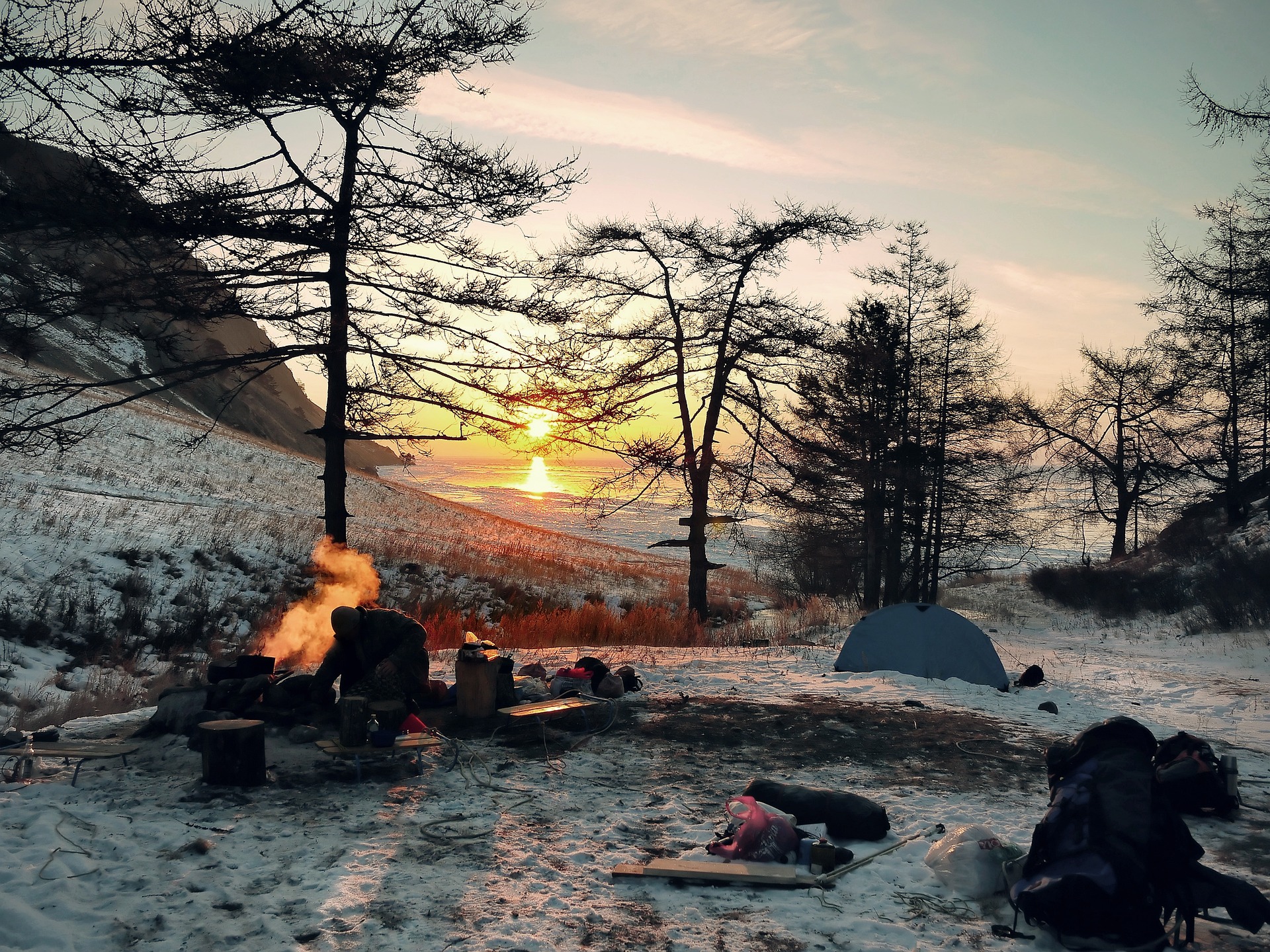
Do you love a challenge and don’t shy away from cold weather? If so, winter camping might be just the adventure you’re looking for.
Winter camping involves snowy and icy conditions, requiring more preparation and specialized gear than traditional camping.
Most of us limit our camping trips for warmth and sun, but camping in cold weather is something absolutely different from our beloved summer camping.
Imagine waking up to a snow-covered mountain vista or seeing a frozen lake glittering in the winter sun. These sights will take your breath away and give you a new appreciation for the beauty of the great outdoors.
Winter camping also allows you to push yourself both physically and mentally. You’ll need to be prepared for the cold and ready to face whatever challenges Mother Nature throws your way.
But the satisfaction of conquering the cold and enjoying the winter wonderland around you is second to none.
To prepare for winter camping, you’ll need to bring specialized gear and clothing to stay warm and dry. This includes a warm sleeping bag, a good 4-season tent, plenty of clothing and sleeping layers. A portable camping heater is a nice add-on that’ll keep you warm and comfortable.
RV camping / Van camping
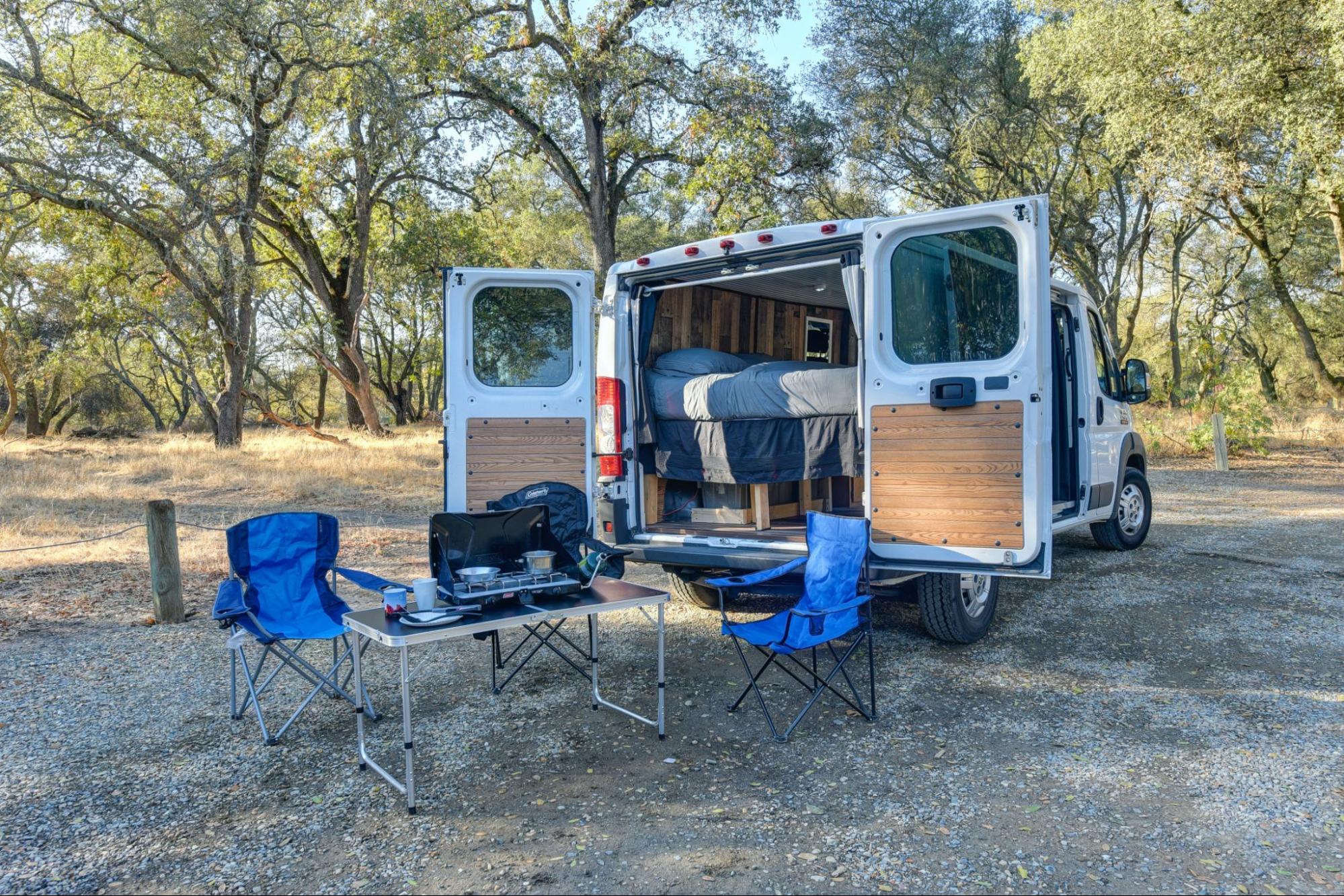
RV and van camping allow you to bring all the comforts of home on the road while still enjoying the beauty and freedom of the great outdoors.
It involves camping in recreational vehicles, ranging from small camper vans to large motorhomes. These vehicles typically come equipped with a variety of amenities, including beds, kitchens, and bathrooms, making them an excellent option for those who want to enjoy the great outdoors without sacrificing comfort.
Van camping, on the other hand, involves camping in a converted van or minivan. These vehicles are typically smaller than RVs but can still be equipped with various amenities, including beds, storage, and cooking facilities. Van camping is a great option for those who want to travel light and be more mobile.
With both homes on wheels, you can travel to remote locations, explore scenic backroads, and still have all the comforts of home with you. And with the rise of #vanlife and the popularity of RV camping, plenty of resources are available to help you plan your trip and find the perfect vehicle for your needs.
Hammock camping
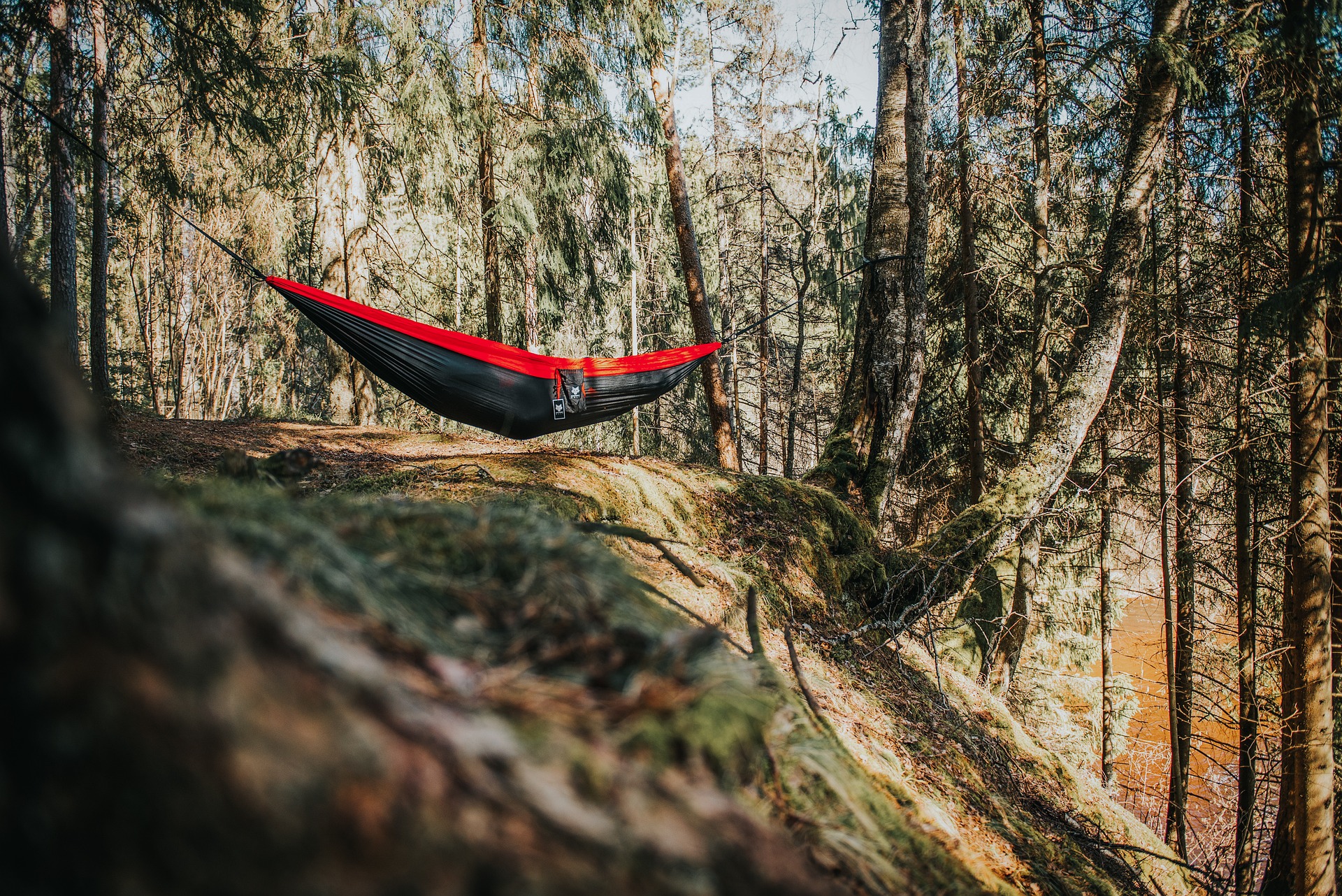
Hammock camping is an excellent option for those looking for a lightweight and a bit different way of camp. This style involves camping in a hammock suspended between two trees or other sturdy anchor points.
One of the benefits of hammock camping is that it allows you to camp in places where traditional tents can’t go. You can set up your hammock in the middle of a forest or on a hillside.
Hammock camping is also lightweight and portable, making it a great option for backpackers and hikers who want to travel light. And with the rise of lightweight hammock camping gear, it’s easier than ever to get started.
All you need to hit the wild is a hammock, some straps or rope to hang it, and a few other pieces of gear to stay warm and dry. Many hammock campers also use a tarp or rainfly to protect themselves from the elements.
Bivvying
For those looking for a minimalist and adventurous way to camp, bivvying might just be the ticket. This style of camping involves sleeping in a lightweight and portable shelter, often just a waterproof and breathable bivy sack or a minimalist tarp.
If you’re camping without a tent, you can travel lighter and faster, so it’s a great way for hikers, bikers, and kayakers who want to cover more ground and explore remote areas.
Unlike tent camping, with minimal gear and setup time you can camp almost anywhere, whether on a mountain peak or by a rushing stream.
Bivvying also offers a unique and immersive experience of the natural world. With just a thin layer of fabric separating you from the elements, you can feel the wind, hear the sounds of nature, and see the stars in all their glory.
Don’t forget to bring some warm and weather-resistant clothing, and a sleeping bag or blanket, too.
Overlanding
For those who crave adventure and independence, overlanding offers a unique and immersive way to explore the great outdoors. This camping style involves traveling off-road in a self-sufficient vehicle, such as a 4×4 truck or SUV, and camping in remote and wild places.
One of the critical benefits of overlanding is the ability to go anywhere you want and stay as long as you like. You can explore pristine wilderness areas, discover hidden gems, and experience the world’s natural beauty on your own terms.
Overlanding also allows you to be self-reliant, carrying all the gear and supplies you need with you. From food and water to shelter and tools, you can live off the grid for days or weeks.
To get started with overlanding, you’ll need a capable off-road vehicle, some basic camping gear, and a sense of adventure.
Kayak camping / Canoe camping

If you’re a paddle-lover and want to explore the world from a different perspective, hear us out – kayak camping or canoe camping might give you a unique and rewarding feeling.
You can travel through a river, lake, or even the open ocean, with a kayak or canoe, instead of relying on the ground.
So, here’s the key benefit of kayak or canoe camping – the ability to explore remote and wild places inaccessible by land. You can paddle through pristine wilderness areas, discover hidden coves and inlets, and experience the world’s natural beauty up close and personal.
It offers freedom and independence as you go wherever you want and camp wherever you like. You can pack all your gear into your boat and embark on an adventure, living off the land and water as you go.
Rooftop camping

For those who love camping but don’t want to sacrifice their vehicle or parking options, rooftop tent camping offers a unique and convenient way to camp on the go. This camping style is pretty new and involves setting up a tent on top of a vehicle, whether a car, truck, or SUV, and camping in style and comfort.
One of the key benefits of rooftop tent camping is the ease of setup and convenience. You can set up camp almost anywhere you park your vehicle, from a scenic overlook to a parking lot. You can also stay high and dry above the ground, away from bugs, critters, and damp ground.
Rooftop tent camping is also something that’s comfortable and more luxurious. Many rooftop tents have comfortable foam mattresses, built-in ventilation, and even LED lighting.
Motorcycle camping

For those who love the thrill of the open road and the freedom of camping, motorcycle camping offers a unique and exciting way to explore the world.
This camping style involves packing your camping gear on your motorcycle and hitting the road, whether for a weekend getaway or an extended adventure.
It’s probably one of those camping styles that give you the greatest sense of freedom and adventure. You can explore remote and wild places inaccessible by car, feel the wind in your hair and the sun on your face, and experience the thrill of the open road.
Motorcycle camping also allows you to travel light and fast, making it an excellent option for solo campers or small groups. With minimal gear and setup time, you can camp almost anywhere you like, from a hidden campsite in the woods to a scenic overlook on a mountaintop.
Backyard camping
Let’s break one myth some likely have in their minds. You don’t have to travel far away from home to camp. Actually, you can literally stay at home. But how come?
Here’s backyard camping, a style that involves setting up a tent and camping gear in your backyard or garden and spending the night under the stars.
While with this camping type, you won’t get the benefits of getting away from the hustle and bustle and exploring nature (unless you live in such a place), you’ll be able to enjoy the convenience, comfort, and absolute safety.
You’ll set up your campsite in a familiar and secure environment, enjoy all the comforts of home, and still feel like you’re camping in the great outdoors.
Backyard camping is also a great option for families with young children or those who want to introduce camping to their kids. You can teach your kids basic camping skills, explore the outdoors together, and create lasting memories without the stress and cost of a big camping trip.
For backyard camp, you’ll need a tent, some basic camping gear, and a backyard or garden to set up your campsite. You can also add fun and creative touches, like string lights, games, or a campfire, to enhance the camping experience.
Beach camping
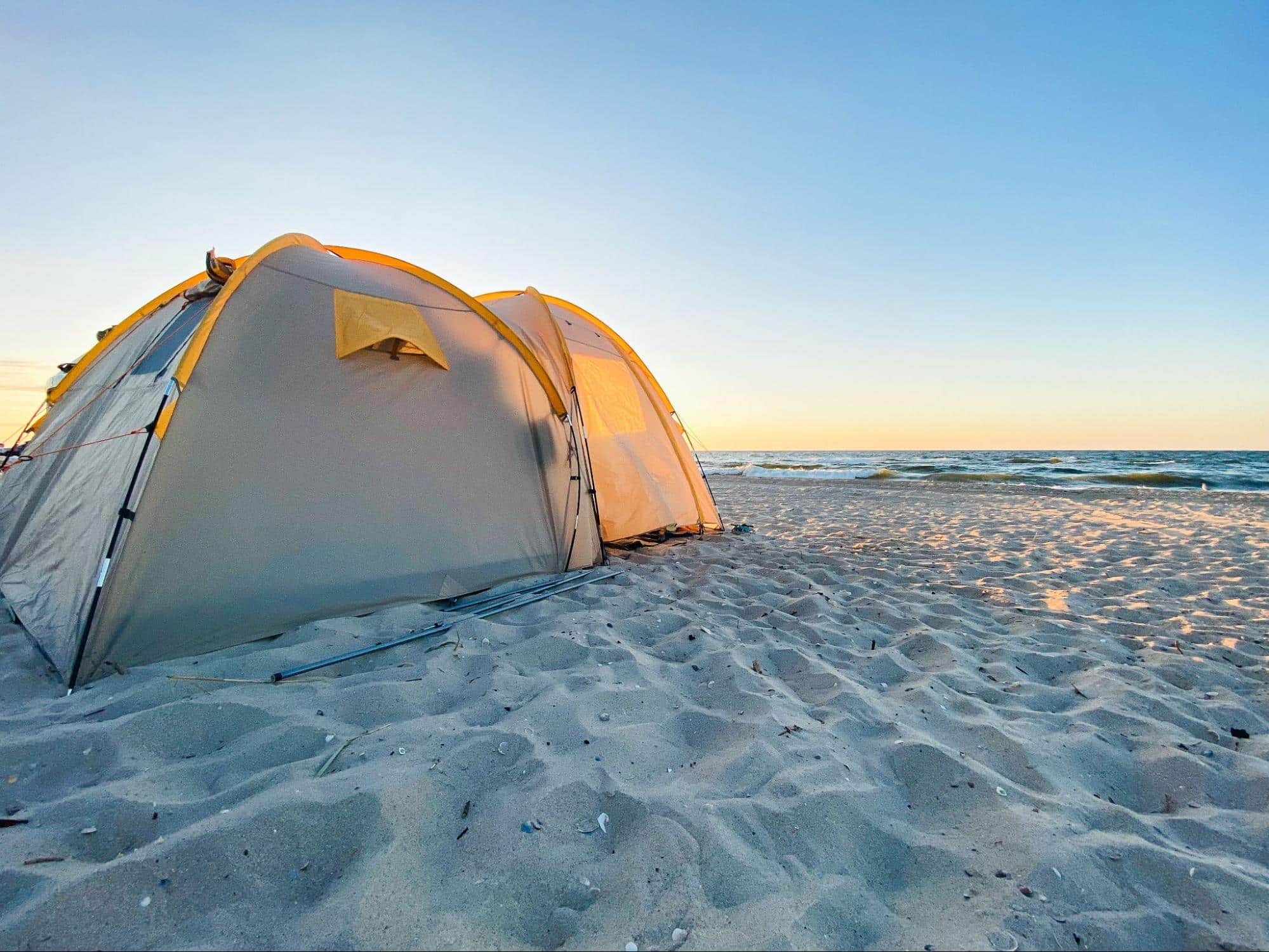
If you’re a beach lover and a camping enthusiast, beach camping is the perfect way to combine your two passions. This camping style involves setting up camp on a sandy beach, with the sound of the waves as your soundtrack and the ocean breeze as your air conditioning.
Beach camping offers many benefits, including stunning views, fresh air, and a unique experience. You can swim in the ocean, sunbathe on the beach, and explore the coastal environment, all while enjoying the comforts of camping.
To get started with beach camping, you’ll need a beach camping permit if required, a sturdy tent that can withstand wind and sand, and some essential beach camping gear like a sunshade, cooler, and beach chairs.
You should also know the local rules and regulations regarding beach camping, such as fire restrictions and beach closures.
Dry camping
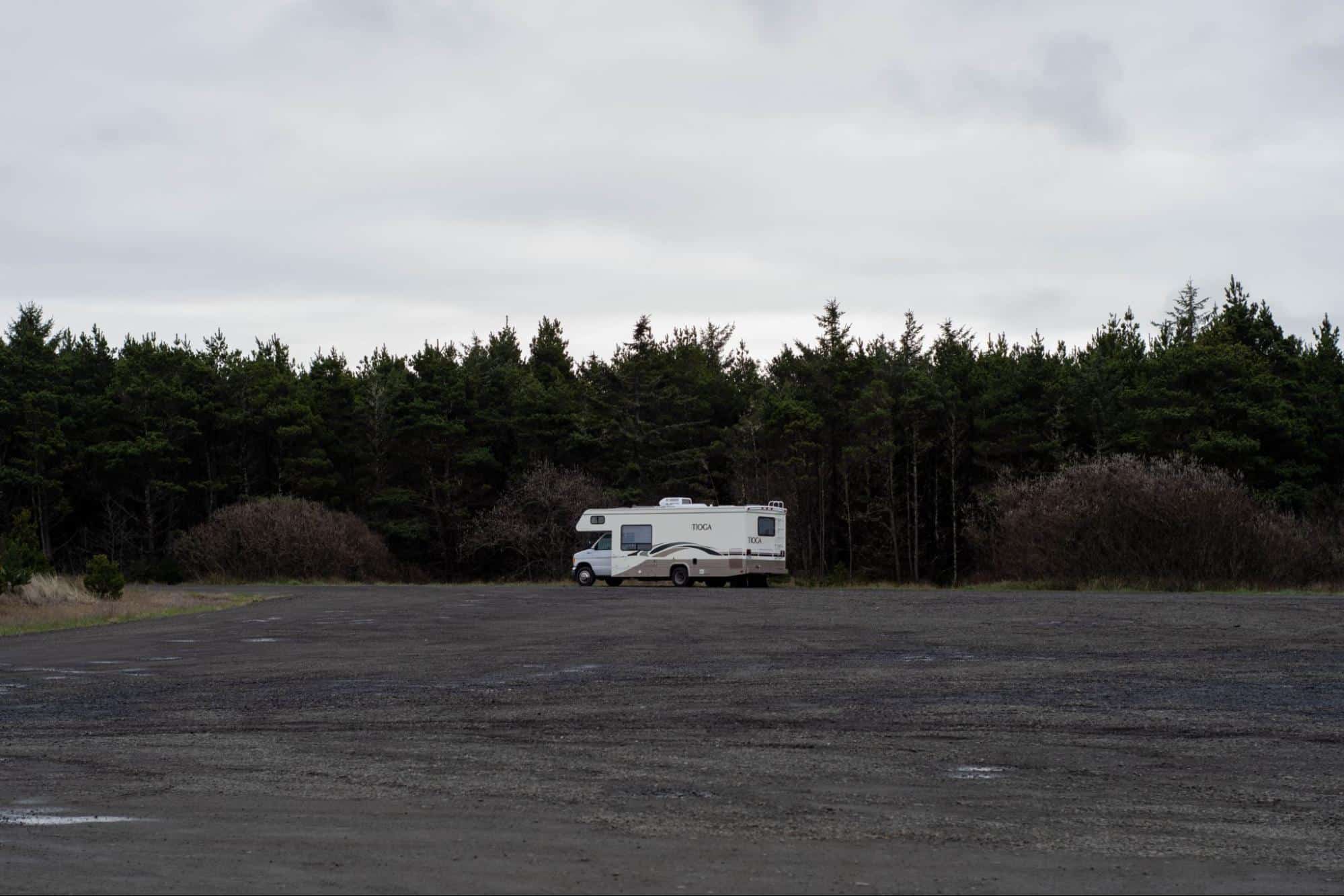
Dry camping might be just what you need if you’re looking for a way to escape the crowds and enjoy the wilderness in its purest form. This style of camping, also known as boondocking, involves camping in remote areas without access to electricity, water, or sewer hookups.
Dry camping offers many benefits, including solitude, self-sufficiency, and exploring the most beautiful and pristine places on earth. You can camp in the middle of nowhere, hike to hidden waterfalls, and stargaze under the darkest skies.
To start with dry camping, you’ll need a self-contained camping vehicle, like an RV or a van, that can generate power and store water and waste. You’ll also need to be comfortable with living off the grid and conserving your resources, such as water and propane.